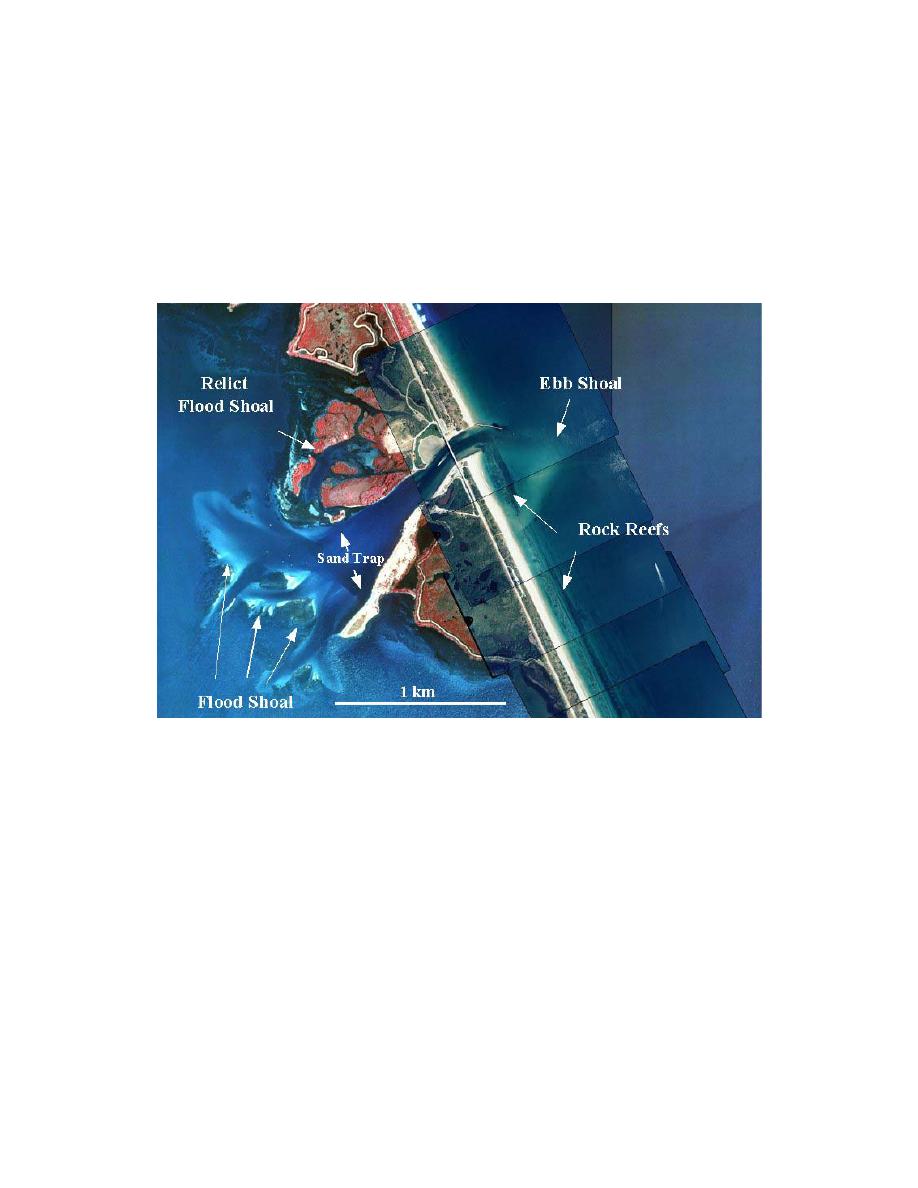
In addition to these geomorphic features typical of microtidal inlets, Sebastian Inlet is also
influenced by the structural control exerted by a relatively shallow, lithified carbonate platform
locally identified as the Anastasia Formation. The Anastasia is composed of shell material and a
small siliciclastic component deposited in a shallow marine environment in the Late Pleistocene
Epoch (White 1970). The present configuration of Sebastian Inlet was artificially cut into the
coquina rock of the Anastasia in 1948, and the depth of the inlet throat section is constrained by this
surface. The Anastasia is veneered by adjacent beach and shoreface deposits and is frequently
exposed in the surfzone and in nearshore zone on the south side of the inlet entrance (Fig. 2).
Fig. 2. Configuration of Sebastian Inlet in 2000.
The adjacent barrier island rarely exceeds 2 km in width or 10 m in elevation (Zarillo and Dolvin
1994). Visual inspection of aerial photography reveals several areas of breaching by tidal inlets and
overwashing by storms. The local tidal range of approximately 1 m and a mean annual wave height
of 0.6 m, indicate features of a wave-dominated coast (Hayes 1979). Major episodic wave
generating events include tropical Atlantic cyclones, occurring from June to November, and
temperate cyclones, or northeasters, from October to April.
The Sebastian Inlet Management Plan requires semiannual topographic surveys and annual high-
resolution aerial photography to track the volume and morphology of the major geomorphic
components and shoreline positions adjacent to the inlet. The sand management plans includes sand
bypassing from a dredged sand trap located on the seaward side of the flood shoal and landward of
the inlet throat section (Fig. 2). The repeated topographic surveys, nearly 50 years of aerial
photography, and frequent collection of process data provide an unusually good database for
understanding and managing sand resources at an inlet.
2
Zarillo et al.



 Previous Page
Previous Page
